This Bulgarian banitsa recipe is extremely easy to make and requires only a handful of ingredients.
All you need to make it are some phyllo dough sheets, eggs, yogurt and feta cheese.
The banitsa is assembled by covering the sheets with a mixture made from the yogurt, cheese and eggs, and rolling them into a log.
Afterwards, all of the logs are placed in a round baking pan and baked in the oven until golden brown.
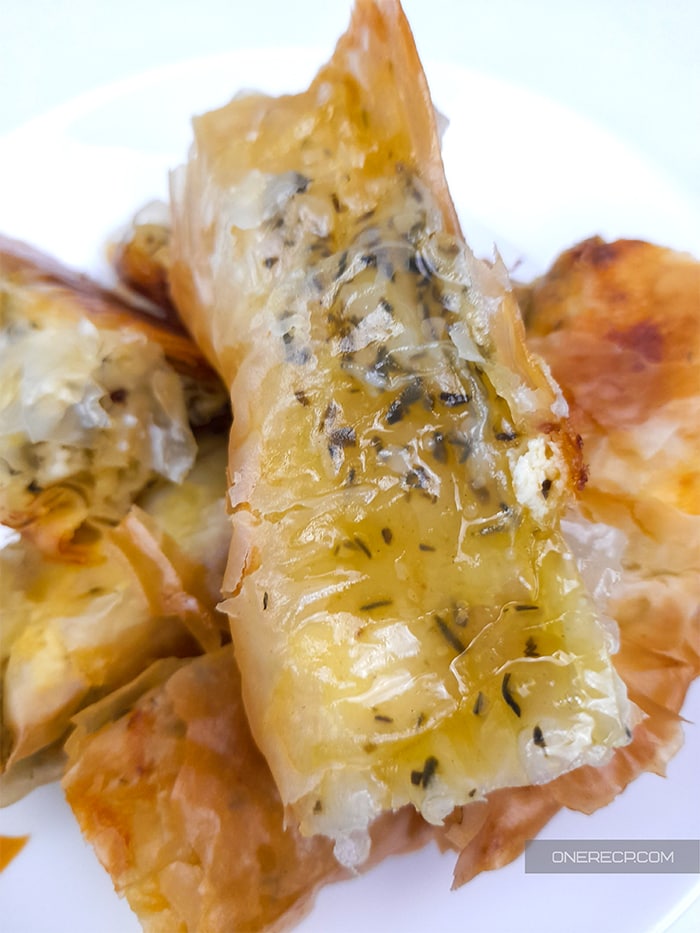
Authentic Bulgarian Banitsa Recipe
Banitsa is an excellent dish for feeding the whole family as it is very filling. It is traditionally made by layering phyllo dough sheets and feta cheese. This Bulgarian banitsa recipe is made thanks to the age-old wisdom I inherited from my grandmother.
Ever since I was a child, my grandma would beckon me to lend her a helping hand and roll the pastry sheets for the banitsa with my tiny hands.
Even though I didn’t realize it at the time, her calls for help were actually intended to teach me how to make banitsa myself.
And as it seems her lessons have actually worked.
Or at least that’s what my family and friends think.
Anyways, as you’ll see, banitsa is a really simple dish to make once you get the knack for it.
The most important thing that determines its flavor and texture is the proportion of ingredients that you use for the filling.
If you add too much eggs or yogurt, you run the risk of making the banitsa soggy. In addition, using too many eggs could also neutralize the flavor of the feta cheese.
For this purpose, I don’t use more than 3 eggs or a cup of yogurt for the filling.
Main ingredients for banitsa
- Phyllo dough – Even though it’s not widely available, Phyllo dough or Filo can usually be found at Greek or Turkish shops. It’s typically sold in packages of 16 sheets which are refrigerated or frozen. If you get frozen phyllo dough, you should thaw it before assembling the banitsa.
- Feta cheese – Traditional Bulgarian banitsa is made with brined white cheese, but Feta is much easier to find. You can also use goat’s cheese if you’re looking for a bolder flavor.
- Yogurt – Any type of plain whole milk yogurt will do the trick, but for a more authentic taste I recommend using Bulgarian yogurt. Bulgarian yogurt contains regionally specific lactic acid bacteria which give it a distinct, tangy flavor.
- Eggs – Eggs are used to provide volume and enrich the flavor of the banitsa. Don’t forget to check if your eggs are still fresh before mixing them with the yogurt.
- Butter – The butter will keep the phyllo sheets moist and prevent the top of the banitsa from burning. I recommend using unsalted butter as feta cheese has a high sodium content.
- Seasonings – Most banitsa recipes are made without any spices, but I’ve found that sprinkling some cumin and savory makes the banitsa more flavorful.
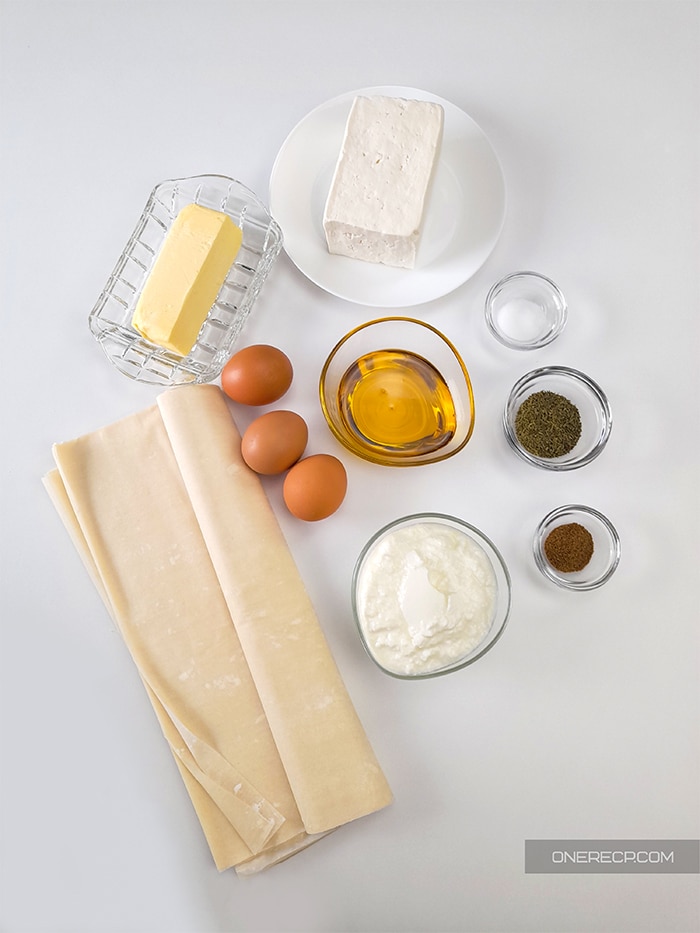
How to make it
Check out the recipe card at the end of this article for detailed, step-by-step instructions.
Start by melting the butter along with the canola oil in a small saucepan over medium heat.
After that, cut the cheese into small blocks and crumble it using a fork.
Continue by beating the eggs, yogurt, cumin and salt until they’re well combined. Add the egg mixture to the crumbled cheese and mix it with a fork.
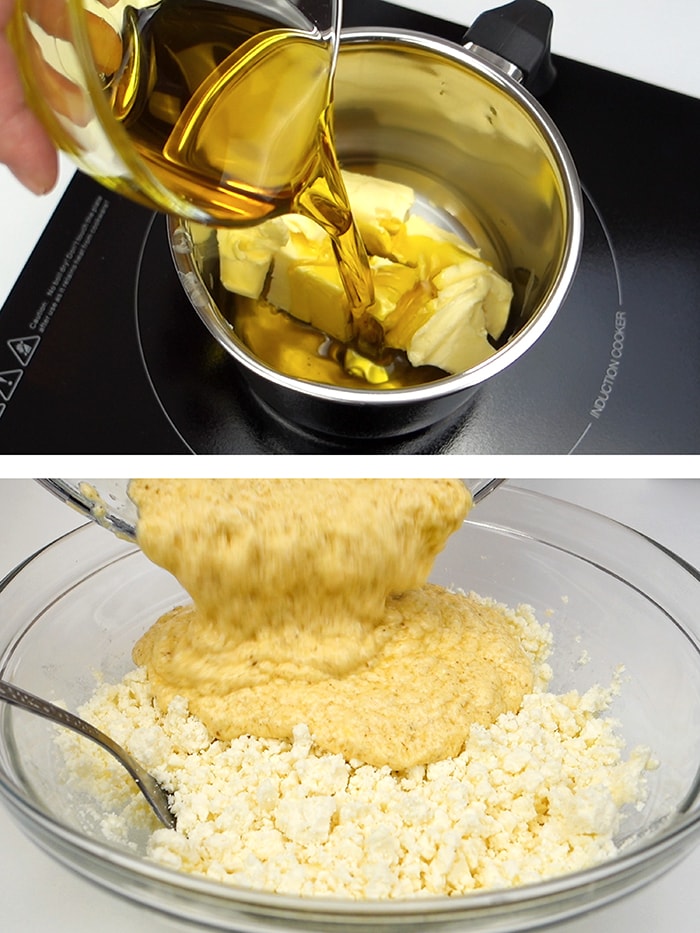
Once done, unroll the phyllo dough and place a pastry sheet on your work surface. Coat the sheet with some of the melted butter, then place another sheet on top.
Brush the top sheet with butter and spread some of the egg and cheese mixture on top.
Sprinkle the sheet with a pinch of savory, then gently fold it into a log and roll the log into a spiral.
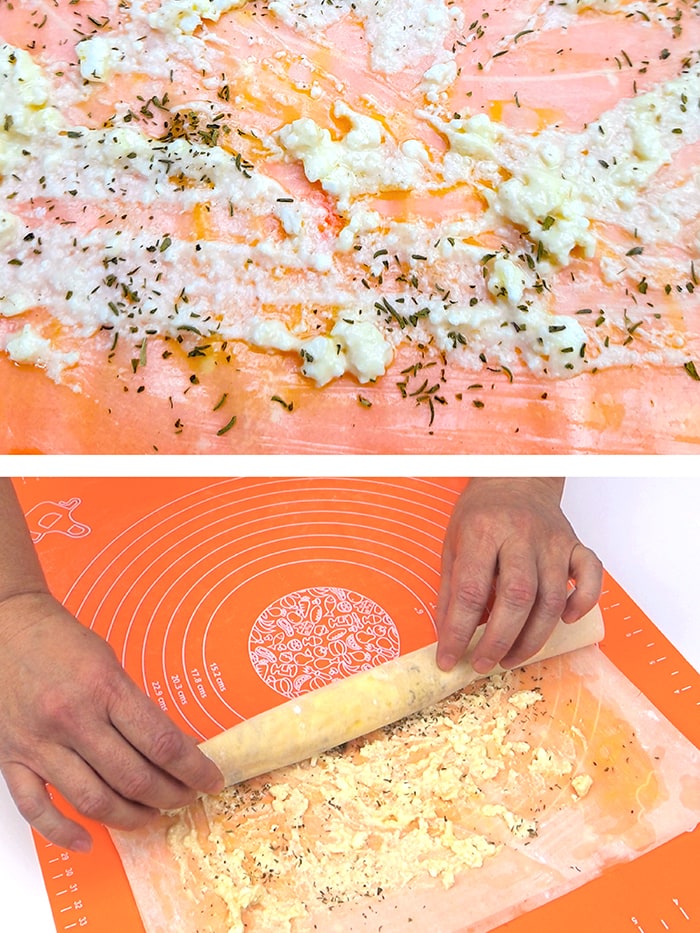
Place the rolled log in the center of a greased baking pan. Continue by rolling each new log around the center.
Once you’ve assembled all of the sheets, and brush the top of the banitsa with the melted butter.
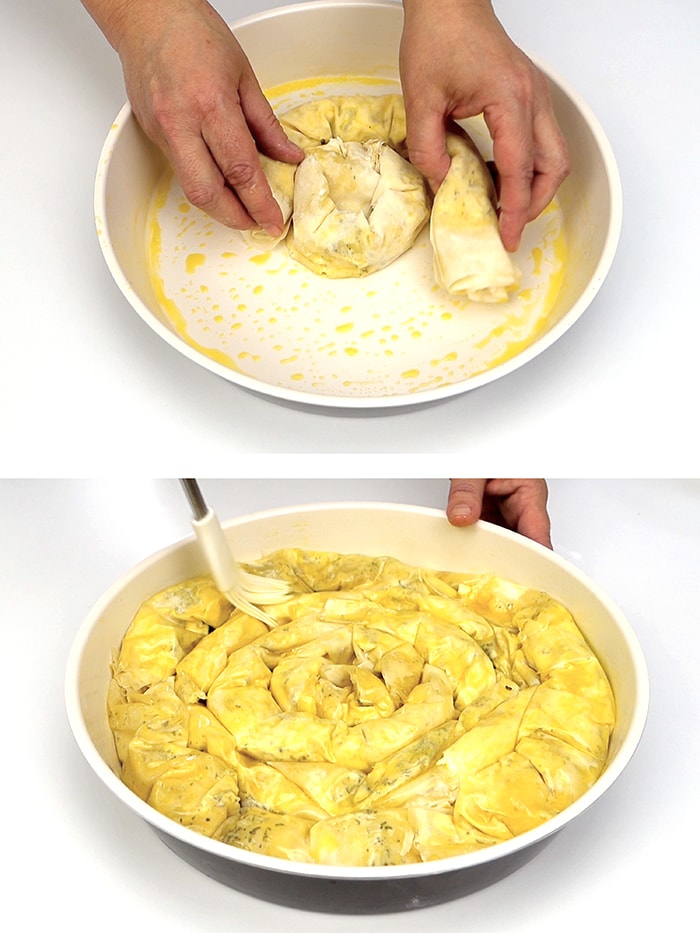
Bake in the oven until golden brown like so:
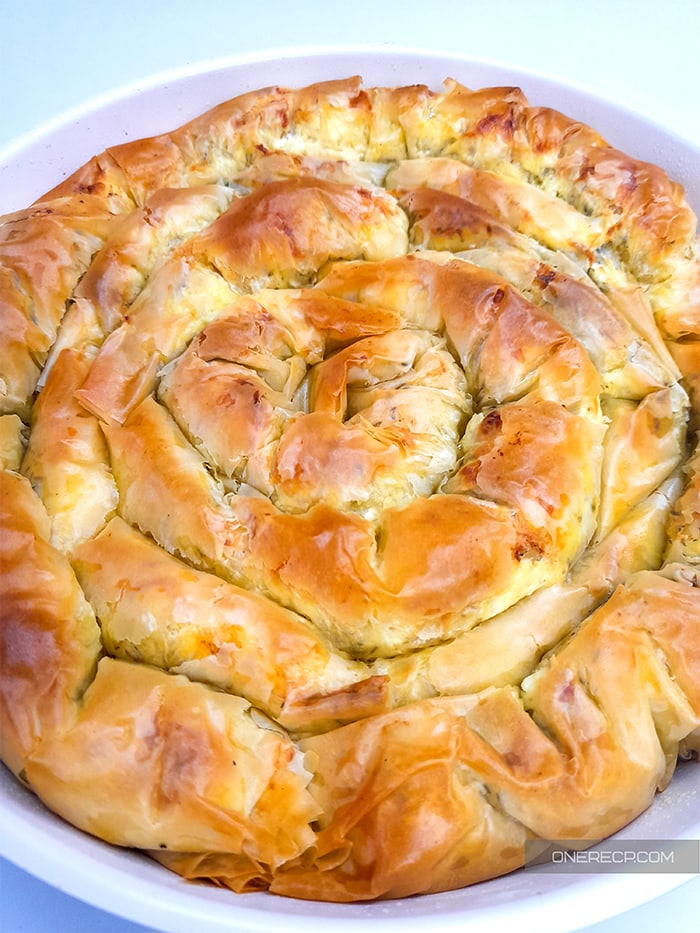
Storage
Even though it’s best to eat banitsa while it’s still hot, you can also store it in the fridge for later use.
To store leftover banitsa in the fridge, you’ll first need to let it cool down. This will prevent the build-up of moisture and increase its shelf life.
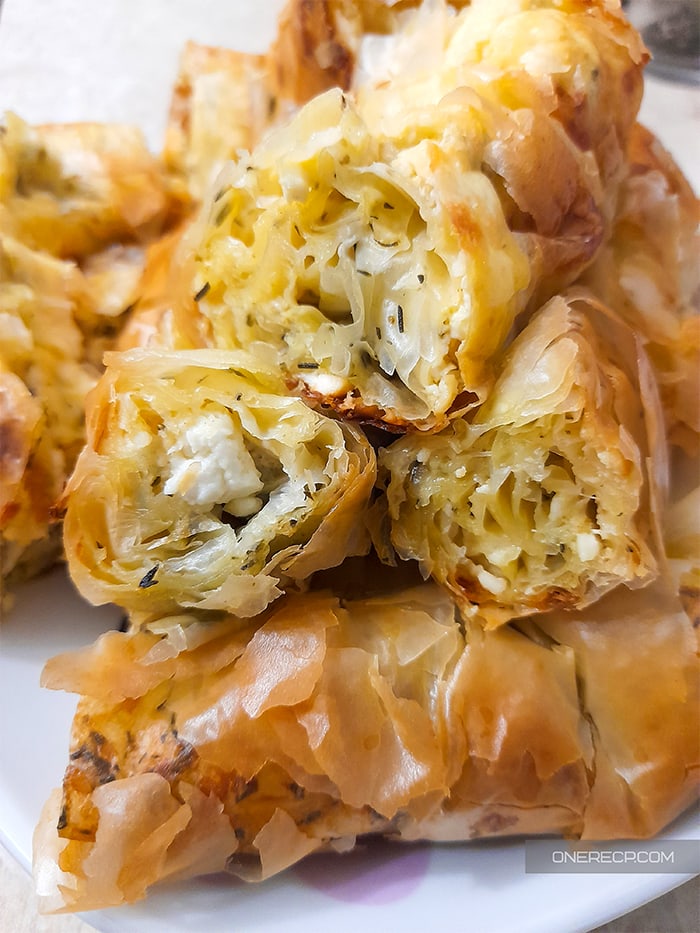
After your banitsa has cooled off, you should transfer it into an airtight container and keep refrigerated for no longer than 3 days.
Reheating is best done in the oven, however, you can also eat banitsa cold. Cold banitsa is something you will either enjoy or won’t so experiment and see how you like it.
Try these Bulgarian pastries next
If you enjoy Bulgarian pastry be sure to give a quick skim to my recipe for Bulgarian Leek Pie! On top of that, you can’t be a fan of my banitsa and not like its spinach version – the Spanakopita!
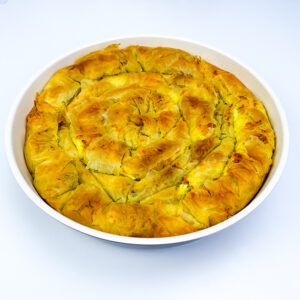
↑ Click stars to rate now!
Authentic Bulgarian Banitsa Recipe
Ingredients
- 1 packet of Phyllo dough 16 sheets, or around 1 pound / 500 g
- 14 oz Feta cheese 400 g
- 4 oz unsalted butter 113 g
- 1/3 cup canola oil
- 1 cup yogurt
- 3 eggs
- salt by taste
- 1 tbsp savory
- 1 tsp cumin
Instructions
- Preheat oven to 350°F (180°C).
- Cut the butter into chunks and transfer it into a small saucepan. Pour the canola oil into the pan and melt the butter over medium heat.
- Crumble the cheese using your hands or a fork. Cutting the cheese into tiny blocks beforehand will make this process easier.
- Whisk the eggs, yogurt, salt, and cumin in a glass bowl.
- Mix the egg mixture and crumbled cheese until they're evenly combined.
- Grease a round baking pan with some of the melted butter.
- Place one of the phyllo sheets on your work surface and lightly brush it with some of the butter. Make sure you spread the butter over the entire sheet.
- Place another sheet on top, brush it with butter, and spread a handful of the egg and cheese mixture on top. Sprinkle some of the savory on top.
- Roll both sheets into a log, then roll the log into a spiral and place it in the middle of the baking pan.
- Repeat the same process with the rest of the sheets and roll each log in a circular fashion around the center.
- Brush the top of the banitsa with the melted butter until it's completely covered.
- Place the pan in the oven and bake for 40 minutes. After you take the banitsa out of the oven, sprinkle its top with some water and cover it with a towel for 15 minutes. This will keep the banitsa moist and prevent it from drying out.
- Serve while still warm.
Video
Notes
- The pan I used was 11 inches and it perfectly fit the ingredient quantities listed.
- If you don't have a round baking pan, you can use a standard rectangular baking sheet and place the rolls next to each other.
- Make sure that the yogurt and eggs are both at room temperature. If they're cold, they won't mix evenly.
- Don't roll the pastry sheets too tightly as they can tear off pretty easily and leak some of the mixture.
- Banitsa is traditionally served with a cup of yogurt mixed in a 1:1 ratio with water and salt. The drink is known as Ayran and originates from Turkish cuisine.
- This recipe is best made with Bulgarian yogurt as it is slightly more acidic. However, Greek yogurt will also do if you can't find Bulgarian.
- It'd be great if you manage to use Bulgarian feta cheese but any feta cheese will work. If you like the end result I recommend trying your next banitsa with goat feta cheese!
↑ Click stars to rate now!
Nutrition
I do my best to provide you with the nutritional information for recipes but I'm not a certified nutritionist. The nutritional information provided should only be treated as an estimate since it will vary based on cooking methods and brands of ingredients used.
Brilliant!
Thank you so much!